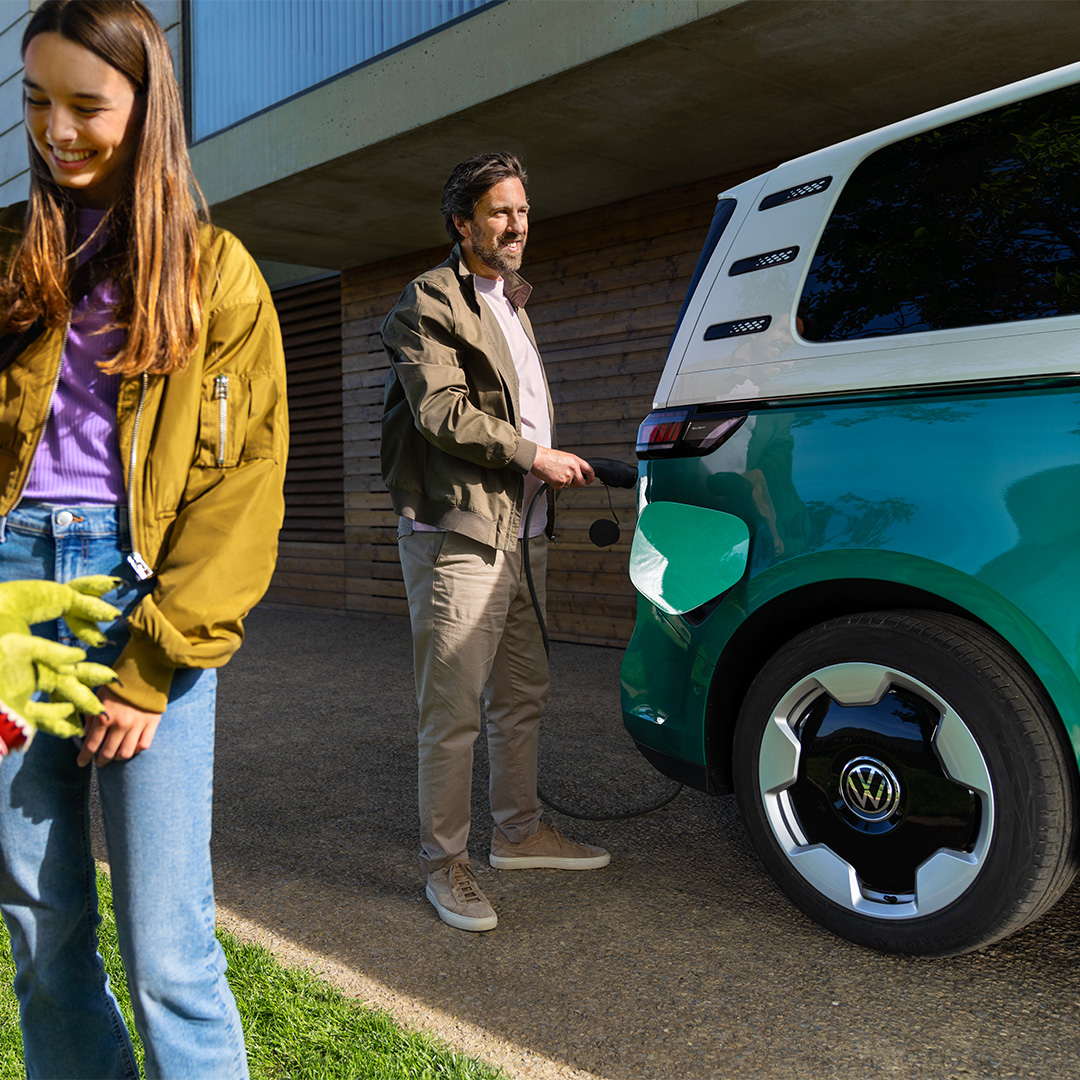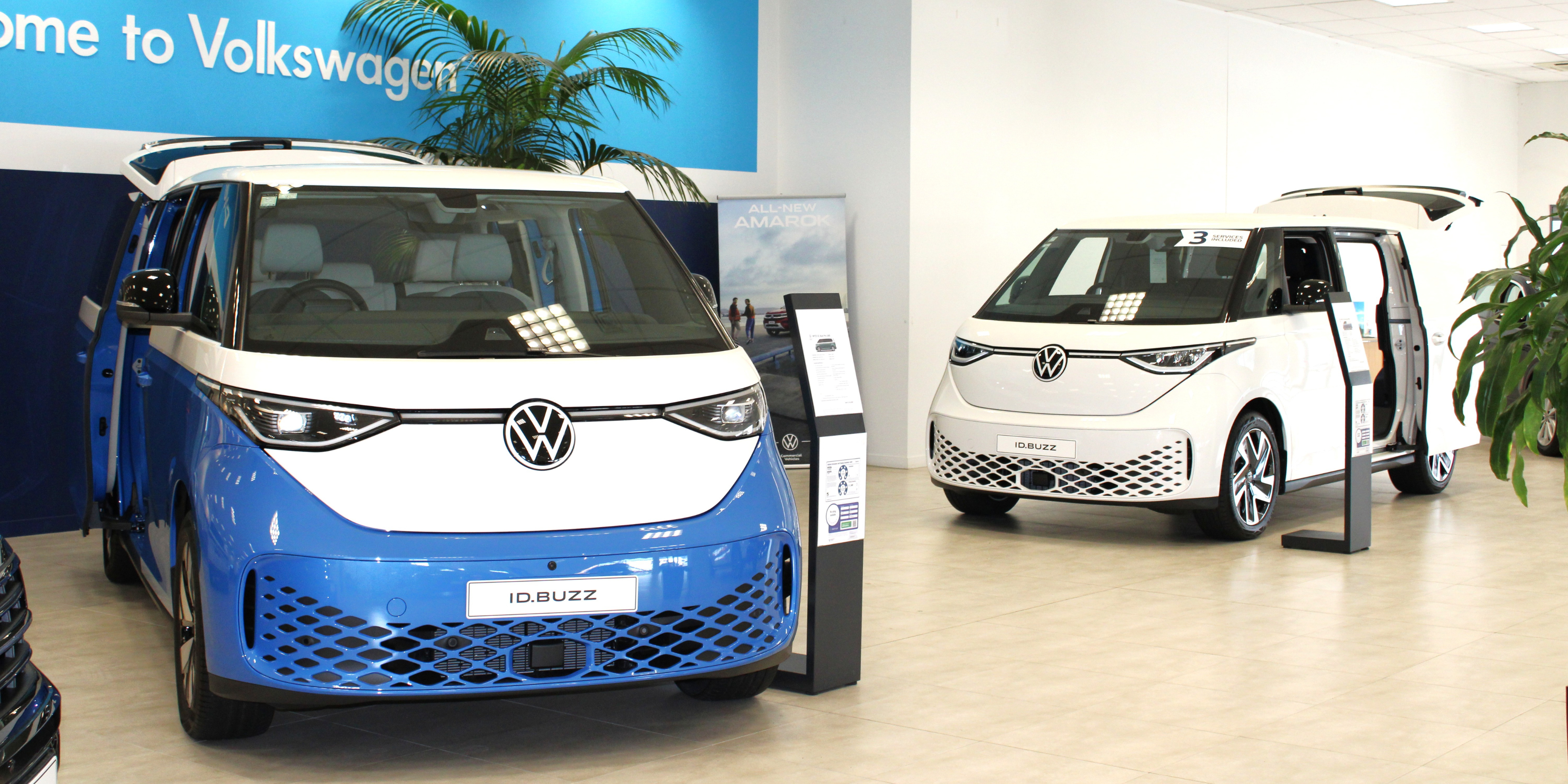Welcome to Robertson Prestige electric vehicles – your trusted destination in Palmerston North for premium electric and hybrid cars. As a leading authorised dealer for Audi electric vehicles, Volkswagen electric vehicles, and Škoda electric vehicles, we offer the latest in EV innovation, luxury, and sustainability. Whether you’re seeking a new Audi e-tron, Volkswagen ID. Buzz, or Škoda Enyaq, Robertson Prestige has you covered with expert advice, competitive pricing, and unmatched after-sales support.
Robertson Prestige, based in Palmerston North, is your one stop location for luxury electric vehicles. We share your enthusiasm for motor cars and top of the range technology and features.
Our experienced Sales Personnel are ready to give you advice and information to help you on your journey to finding the car that is right for you. Accompanying our sales team is our Parts and Service Department with highly trained individuals offering timely service.
We are Manawatu’s authorised agent for Audi, Volkswagen and Skoda Electric and Hybrid vehicles.
Robertson Prestige is part of the Robertson Motor Group which is locally owned by the Robertson family in Manawatu. Robertson Motor Group employs more than 150 staff across the 6 motor vehicle operations. With a range of brands throughout the Dealerships there is something for everyone. The Robertson family are proud supporters of the International Speedway and have a focus on bringing like minded groups together.
Comprehensive EV Support: From home charger installation assistance to ongoing servicing, our dedicated EV specialists ensure your transition to electric is seamless.
Government Incentives: We help you access New Zealand’s Clean Car Discount rebates on eligible electric and plug-in hybrid vehicles.
Sustainability: Drive with zero emissions and contribute to a cleaner environment without compromising on luxury and performance.
Learn more about the benefits of driving electric on the NZ Transport Agency Clean Car webpage

Robertson Prestige is proud to serve the Manawatū region with a full-service dealership experience including sales, servicing, and genuine parts for electric vehicles. Our friendly team is ready to assist you with test drives, finance options, and after-sales care to keep your EV running smoothly.
For any questions about electric vehicles, charging infrastructure, or government rebates, please visit our Electric Vehicles FAQ or contact us directly.
At Robertson Prestige, our electric vehicles lineup features cutting-edge models that combine performance with eco-conscious driving. Highlights include:
The Audi Q4 e-tron and Q6 e-tron electric SUVs, known for their quattro all-wheel drive and long-range capabilities.
The iconic Volkswagen ID. Buzz, an all-electric van with spacious cargo and zero emissions.
Škoda’s Enyaq iV offering smart technology and family-friendly electric mobility.

If you want to know more about our electric range, wonder what owning an electric car is like, or run a business and are curious to find out if your fleet can run on electric, you’ve come to the right place. Find answers to some of the most common questions we’re asked about electric cars.
It’s commonly thought that electric cars can’t travel that far, but it’s a misconception that is fast disappearing with the latest generation of electric vehicles. Like petrol and diesel cars, range is influenced by a variety of factors, including driving conditions, weather, load, tyres and aerodynamics.
According to the latest WLTP (real world driving test) figures, electric vehicles range is from 440km* upwards and performance is improving all the time.
The average New Zealander drives approximately 40km per day, meaning not only are electric vehicles practical for everyday use, but the long0range capability on offer also makes long distance trips possible on a single charge.
*This is variable based on driving conditions, style, situation and terrain and is a guide only.
Like a petrol or diesel car, your electric car will warn you when it’s running low. It will also switch automatically to energy-saving mode.
The network of charging stations in New Zealand is growing extremely rapidly right now. There are already more electric charging points than there are fuel stations and the number is increasing all the time.
Find a charging station here: http://www.plugshare.com
Charging your electric car is very safe, even in damp and rainy conditions. As long as your electric car and the charging station meet strict legal standards, no electricity will flow until a secure and fully safe contact has been established.
You can also safely take your car through a car wash and open the bonnet in the rain. And your electric car is as safe as any other when there is lightening.
The best way to answer this question is to drive one. We’re pretty certain you’ll find the experience anything but boring. Unlike petrol and diesel cars, electric cars have what is called ‘instant torque’, which means there is no lag between you pressing the accelerator and the power coming on.
In addition, the batteries in the latest generation of electric vehicles are integrated into the car floor, giving it a phenomenally low centre of gravity and optimum weight distribution. As a result, the dynamics of electric vehicles are breathtaking.
It’s really simple. All you need is a charging cable and a connection to electricity. The quickest and simplest way to charge from home is with a wall box. This isn’t just an option for owners who can park their cars outside their homes. Wall boxes can also be installed in the garages of blocks of flats, while charging point manufacturers are developing a variety of different solutions for on-street charging.
Employers and retailers are also increasingly offering charging, so you can fill up while you work or shop.
Recycling of used high-voltage batteries does not damage the environment. The lithium-ion battery in electric vehicles is a valuable source of raw materials. When the battery is recycled, secondary raw materials such as lithium, cobalt, nickel and manganese can be extracted. This helps to replace the expensive mining of primary raw materials.
All of our BEVs and PHEVs have an exterior e-sound as standard which emits an external electronic sound to pedestrians up to 29km an hour at a decibel level, the same amount of a petrol or diesel engine.
It’s not mandatory, but we recommend all owners of a plug-in car get a home wall box, in the same way that one wouldn’t rely on workplace or public charging for a smartphone or laptop.
You can expect the ownership costs of an electric vehicle to be lower than a comparable combustion engine vehicle. Electric technology is less maintenance-intensive, which can mean lower servicing costs. Home charging is relatively low-cost, while some public stations may offer free charging.
Charging times will vary depending on what model you have and whether you are charging at home or on the road. At home, with a 7kW wall connection, you can fully charge your electric car overnight. With a public 50kW rapid charger, you can usually expect to add about a 100km range in 15- 30 minutes.
Charging times will vary depending on what model you have and whether you are charging at home or on the road. At home, with a 7kW wall connection, you can fully charge your electric car overnight. With a public 50kW rapid charger, you can usually expect to add about a 100km range in 15- 30 minutes.
Consider on average, how much you drive daily to best estimate how much range you’ll realistically need. Most people will charge their electric vehicle just like a mobile phone – overnight on a trickle charge and at the lowest rate provided by the energy supplier.
An annual dealership visit is recommended to ensure all aspects of your vehicle meets specifications.
An electric vehicle does not need more maintenance than any other vehicle as regular maintenance and service checks are important for every car to ensure its reliability and safety. Having said that, electric cars don’t have oil or transmission fluids that need to be changes, and also have fewer moving parts
Like conventional cars, electric cars are subject to standard crash tests and have reported good results. Batteries are not explosive in an accident. What’s more, electric cars can operate without a clutch, a gearbox or engine oil, typical causes of fires in a crash. Overall, they have much fewer components, which further reduce the likelihood of failure. The batteries are completely insulated from the rest of the car, and in the event of an accident, the whole system is disconnected.
Plug-in hybrid (PHEV) vehicles combine a classic internal combustion engine with an electric motor which can be recharged from an electrical outlet. The PHEV can be driven in pure electric mode, but the range is limited to 50- 60km. A hybrid (HEV) combines an internal combustion engine with an electric motor, but cannot be charged from an external network. The battery powering the electric motor is recharged solely by driving and is only built for short ranges, especially for starting off. An electric vehicle (BEV) does not have an internal combustion engine. Instead, it powers the car using only a battery, which can be charged from an external power supply.
There is no fundamental variation in the lifecycle of any of the vehicles, whether they are hybrids, plug-in hybrids, or electricity-only cars. The main difference is that hybrids and plug-in hybrids still have engines that rely on petrol, whereas a fully electric car doesn’t generate any emissions as it is completely battery-operated.
Electric vehicles can save you money in the long term, as the average operating costs are much lower than for conventional vehicles.
An electric-motor car cannot be towed on a rope or with a tow dolly. Always use a hydraulic arm and load the car on to a platform when towing is required. You can push the vehicle over short distances, but it must be in neutral and the ignition must be switched on.
No direct sunlight reaches the battery because it is in the vehicle floor. However, cooling down the vehicle requires battery energy, which reduces the range.
The car behaves like a conventional car. A lightning strike is not critical. If the vehicle is being charged, a fuse will trip. In the worst-case scenario, the charger will be destroyed.
The car behaves like a conventional car. The high-voltage battery is sealed to prevent water penetration.
At Robertson Prestige, we offer:
Credit Agreement – available for both Business & Consumer customers
Lease – available for Business customers
Operating Lease – full & non maintained options – available for both Business & Consumer customers
Robertson Prestige Electric Vehicles
Cnr Rangitikei Street & John F Kennedy Drive, Milson, Palmerston North 4412
Phone: 06 353 0605